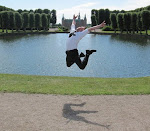
The following information on Thunder Bay is comprised of a few highlights freely adapted from Wikipedia:
The city takes its name from the immense bay at the head of Lake Superior, known on 18th century French maps as "Baie du Tonnerre". The city is often referred to as the Lakehead or Canadian Lakehead because of its location at the end of Great Lakes navigation.
The port of Thunder Bay forms an important link in the shipping of grain and other products from western Canada through the Great Lakes and the Saint Lawrence Seaway to the east coast. Forestry and manufacturing play important roles in the city's economy, but this is changing toward a "knowledge economy" based on medical research and education.
If the map below does not show on your computer, please copy/paste the link into your browser's address box in order to view it:
http://maps.google.dk/maps?hl=en&safe=off&q=thunder+bay&ie=UTF8&split=0&gl=dk&ei=4SyaStaZOpDd-QbcgZ2PBA&z=10&iwloc=A
Google map of Thunder Bay:
Google satellite image of Minnesota and Thunder Bay, Ontario:
The distance between Minneapolis, Minnesota and Thunder Bay, Ontario is 488 kilometers (303 miles).







No comments:
Post a Comment